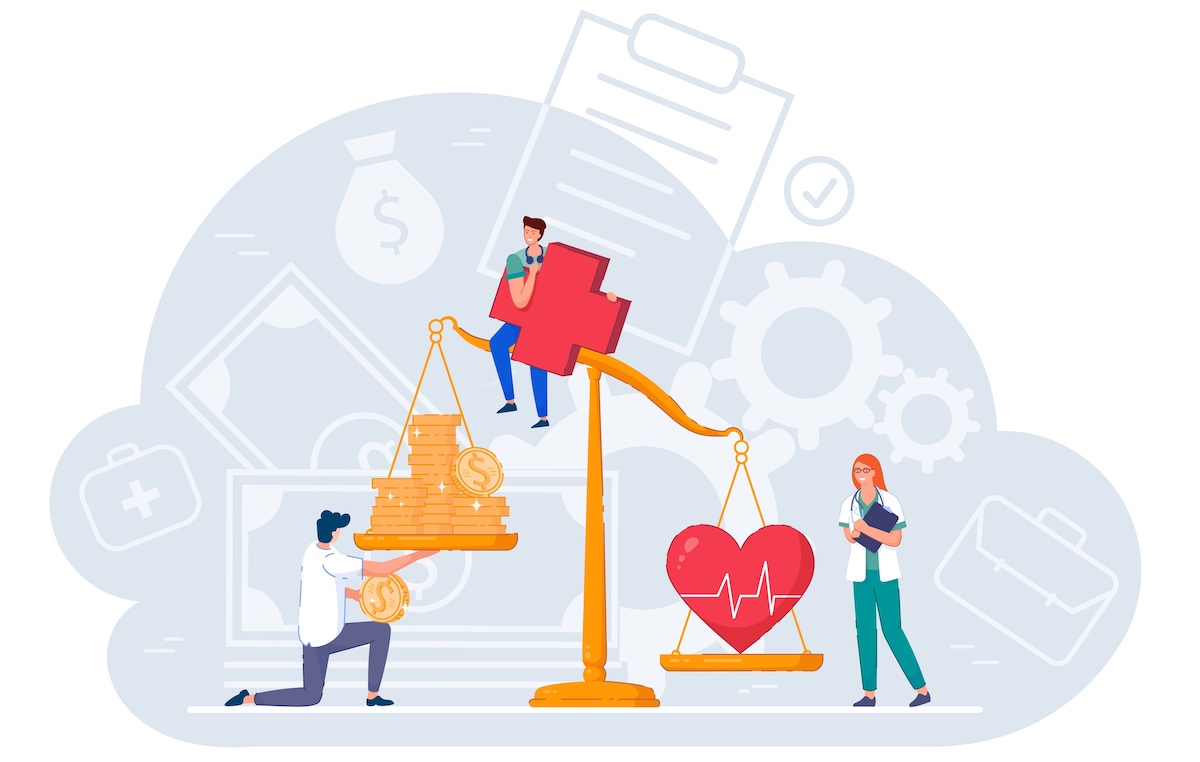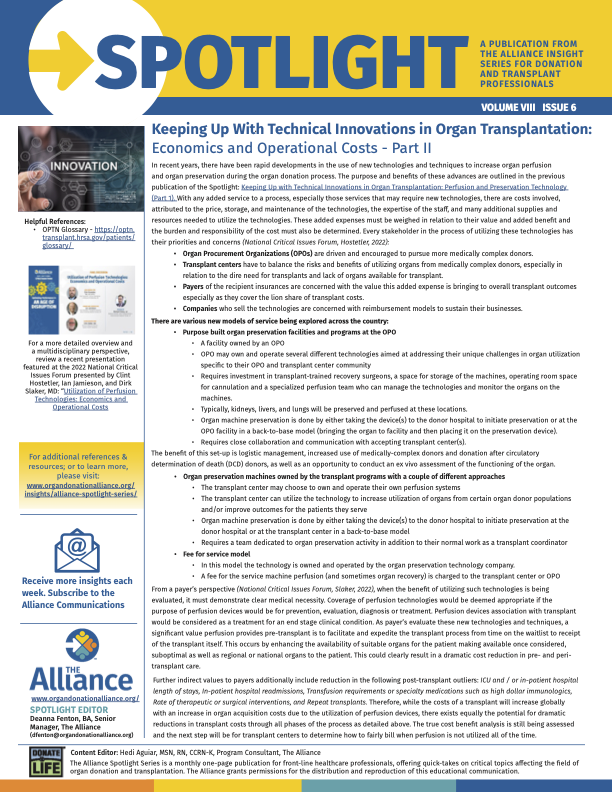In recent years, there have been rapid developments in the use of new technologies and techniques to increase organ perfusion and organ preservation during the organ donation process. The purpose and benefits of these advances are outlined in the previous publication of the Spotlight: Keeping Up with Technical Innovations in Organ Transplantation: Perfusion and Preservation Technology (Part 1).
The main benefits the new technologies and techniques provide in organ donation and transplantation are:
- Decreased cold ischemic time
- Utilization of organs that normally would have been discarded or not even recovered
- Mitigate some transportation and logistic issues associated with organ donation and transplantation
- Minimization of damage to the organs (the current practice of static cold storage can cause damage)
- The ability to perform ex vivo organ assessment
- Optimize the clinical outcomes of transplantation
With any added service to a process, especially those services that may require new technologies, there are costs involved, attributed to the price, storage, and maintenance of the technologies, the expertise of the staff, and many additional supplies and resources needed to utilize the technologies. These added expenses must be weighed in relation to their value and added benefit and the burden and responsibility of the cost must also be determined.
Every stakeholder in the process of utilizing these technologies has their priorities and concerns (National Critical Issues Forum, Hostetler, 2022):
- Organ Procurement Organizations (OPOs) are driven and encouraged to pursue more medically complex donors.
- Transplant centers have to balance the risks and benefits of utilizing organs from medically complex donors, especially in relation to the dire need for transplants and lack of organs available for transplant.
- Payers of the recipient insurances are concerned with the value this added expense is bringing to overall transplant outcomes especially as they cover the lion share of transplant costs.
- Companies who sell the technologies are concerned with reimbursement models to sustain their businesses.
There are various new models of service being explored across the country:
- Purpose built organ preservation facilities and programs at the OPO
- A facility owned by an OPO
- OPO may own and operate several different technologies aimed at addressing their unique challenges in organ utilization specific to their OPO and transplant center community
- Requires investment in transplant-trained recovery surgeons, a space for storage of the machines, operating room space for cannulation and a specialized perfusion team who can manage the technologies and monitor the organs on the machines.
- Typically, kidneys, livers, and lungs will be preserved and perfused at these locations.
- Organ machine preservation is done by either taking the device(s) to the donor hospital to initiate preservation or at the OPO facility in a back-to-base model (bringing the organ to facility and then placing it on the preservation device).
- Requires close collaboration and communication with accepting transplant center(s).
The benefit of this set-up is logistic management, increased use of medically-complex donors and donation after circulatory determination of death (DCD) donors, as well as an opportunity to conduct an ex vivo assessment of the functioning of the organ.
- Organ preservation machines owned by the transplant programs with a couple of different approaches:
- The transplant center may choose to own and operate their own perfusion systems
- The transplant center can utilize the technology to increase utilization of organs from certain organ donor populations and/or improve outcomes for the patients they serve
- Organ machine preservation is done by either taking the device(s) to the donor hospital to initiate preservation at the donor hospital or at the transplant center in a back-to-base model
- Requires a team dedicated to organ preservation activity in addition to their normal work as a transplant coordinator
- Fee for service model
- In this model the technology is owned and operated by the organ preservation technology company.
- A fee for the service machine perfusion (and sometimes organ recovery) is charged to the transplant center or OPO
From a payer’s perspective (National Critical Issues Forum, Slaker, 2022), when the benefit of utilizing such technologies is being evaluated, it must demonstrate clear medical necessity. Coverage of perfusion technologies would be deemed appropriate if the purpose of perfusion devices would be for prevention, evaluation, diagnosis or treatment. Perfusion devices association with transplant would be considered as a treatment for an end stage clinical condition.
As payer’s evaluate these new technologies and techniques, a significant value perfusion provides pre-transplant is to facilitate and expedite the transplant process from time on the waitlist to receipt of the transplant itself. This occurs by enhancing the availability of suitable organs for the patient making available once considered, suboptimal as well as regional or national organs to the patient. This could clearly result in a dramatic cost reduction in pre- and peri-transplant care.
Further indirect values to payers additionally include reduction in the following post-transplant outliers:
- ICU and / or in-patient hospital length of stays
- In-patient hospital readmissions
- Transfusion requirements or specialty medications such as high dollar immunologics
- Rate of therapeutic or surgical interventions
- Repeat transplants
Therefore, while the costs of a transplant will increase globally with an increase in organ acquisition costs due to the utilization of perfusion devices, there exists equally the potential for dramatic reductions in transplant costs through all phases of the process as detailed above.
The true cost benefit analysis is still being assessed and the next step will be for transplant centers to determine how to fairly bill when perfusion is not utilized all of the time.







